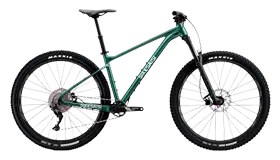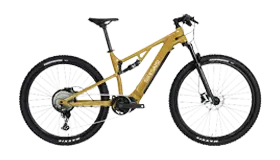Is it good to have a disc brake system on a road bike?
What are the most popular disc brake road bikes these days?
Disc brakes, as they are commonly called, are a common system found in bikes and motorcycles, and are characterized by their high braking performance. The MTB type has been used in bicycles for a long time, and has rapidly become popular in road bikes in recent years. The reason for its popularity is also that disc brakes have many advantages, and along with technological innovation, the price has become lower, and the installation has become increasingly simple, which has promoted its development.
High-end models are almost always equipped with disc brakes
Nowadays, more and more manufacturers are launching high-end models of new models using disc brake systems. Brands such as TREK and Specialized have completely switched to selling only disc brake models. Although the traditional mainstream rim brake system will not disappear, there will definitely be more disc brake models to occupy market share in the future.
Is it really necessary to install a disc brake system on a road bike?
Fans all know that disc brakes are becoming increasingly popular and popular, but is it really necessary? These negative impressions, such as "It looks difficult to maintain" and "It's too expensive," are also true. The brakes required vary from person to person. I still hope that friends can consider whether it is really necessary for them after understanding its advantages and disadvantages.
Anyway, it looks good, but it just doesn't feel necessary. Is it necessary to specifically choose this? Isn’t the rim brake system pretty good too?
It’s not bad to say this to the higher ups. Of course there is no problem with rim brakes. Friends only need to understand the advantages and disadvantages of disc brakes before judging whether they are really necessary!

Types of brakes for road Bikes
First, let’s take a look at the disc brake systems used on road bikes. The functions of a bicycle are nothing more than walking, turning, and stopping, so the brakes play the role of "stopping". And the two biggest differences between road bikes are the two brake systems: "rim brake" and "disc brake". Their respective characteristics are discussed below.
rim brake
Rim brakes are the mainstream system so far. A structure in which the outermost part of the wheel, called the "rim," is sandwiched between rubber-based brake pads to cause friction between them to create resistance and thereby generate braking force. There are many different types of rim brakes, but the principle of obtaining braking force is basically the same.
disc brake
The disc brake system is a system that has become popular on road vehicles in recent years. A structure in which a disc-shaped metal plate called a "disc brake pad" is installed in the center of the wheel hub and clamps the left and right brake pads with the help of brake calipers to generate braking force. The principle of using friction resistance is the same as that of rim brakes, but the structures of the two are completely different systems and are not interchangeable.
Disc brake systems are divided into two types:
Speaking of road bikes, they can be divided into two major categories: rim brakes and disc brakes, but the "disc brake system" I want to mention in this article will be divided into [mechanical] and [hydraulic]. Let’s talk about their respective characteristics below. Mechanical disc brake Mechanic disc brakes, brake levers and brake calipers are related by brake lines. After the brake handle is pulled, the brake line is tightened, and the piston in the brake caliper drives the brake block to clamp the metal plate of the disc brake pad to generate braking force.
Relatively simple construction costs are low, and most entry-level models mainly use this method. Hydraulic disc brake Hydraulic disc brakes, brake handles and brake calipers are not connected by brake lines but by oil lines. The inside of the oil line is filled with brake fluid. When the brake handle is pulled, the pressure in the line (oil pressure) increases, and the piston in the brake caliper is ejected, thereby generating braking force. Usually the hydraulic type has higher performance, and high-end road disc brakes mostly use this method.
Types of road bike brakes
1 Rim brakes (V brakes, mid-pull brakes, caliper brakes, etc.)
2 Disc brake (mechanical/hydraulic)

Advantages of disc brakes for road bikes
What are the advantages of disc brakes? What's the point of installing disc brakes since they have the same "stop" function as rim brakes? Understand the advantages and disadvantages of disc brakes and comprehensively consider the necessity when using them.
Advantages ① Very small effort can effectively exert braking force
Disc brakes can exert high stopping power with a very light touch. To be precise, it does not mean that the braking force will be very high, but that the full braking force can be exerted with a small amount of force. In particular, the characteristics of the hydraulic type are very obvious, and it may be dangerous if you are not used to it and use it with inertia. Of course, it does not mean that the wheel will be locked abruptly and the brakes will suddenly stop. In short, it can provide the most appropriate braking performance.
Advantages ② Strong applicability when the weather is bad
Disc brakes barely change braking power even when wet from rain. If the rim brake is used on a road wet by rain, it will appear wet, and the problem of reduced braking force cannot be avoided in any case. On the other hand, disc brakes are installed at the center of the wheel, which makes them less susceptible to splashing water on the road. During braking, the disc brake pad panel and brake calipers will generate high temperatures, and the moisture hanging on them will also be thrown away.
Advantages ③ Little damage to wheels
The rim brake principle is a structure clamped on the wheel rim. Like the brake pads, the rim will gradually wear with the use of the brake. Compared with the installation position of the disc brake, it does not cause any harm to the wheel itself, and can be called a system with little damage to the wheel.
Advantages ④ Low center of gravity
Disc brakes are installed in the center of the wheel, and their center of gravity is lower compared to rim brakes installed on the upper part of the wheel. Although the brake system is lightweight, it still has weight. Lowering the center of gravity can improve the stability of riding, and there will be no problems when rocking the bike and riding with force. These are its advantages.
Advantages ⑤Strong rigidity
The disc brake pad is installed in the center of the wheel and needs to withstand a certain amount of force during braking. The rigidity of the front and rear fork tips needs to be strengthened. In addition, unlike the previous quick-release type, the current one uses what is called a through-axle. A very thick shaft roller is hard-connected and locked with threads, which can further strengthen its rigidity. This reduces distortion and enables a clean ride.
Disadvantages of disc brakes for road bikes
Disadvantages ① Difficulty in maintenance
Compared with rim brakes, it can be said that the difficulty of adjustment and maintenance is relatively high. The gap adjustment between the disc brake pad plate and the brake block is often very demanding. The external hydraulic type uses brake fluid that has never been used before. If used incorrectly, its braking performance will be affected. Especially for hydraulic type, it is recommended to go to a trustworthy specialty store for maintenance.
Disadvantage ② Heavy weight
In addition to the increase in the number of parts, in order to ensure the rigidity of the frame, there is usually an increase in weight. Although lightweight brake calipers are also being developed, at this stage they are almost always heavier than rim brakes. Its weight can take advantage of its stability when cruising at high speeds and when going downhill, but it shows its disadvantages when accelerating from the start and when going uphill.
Disadvantages ③ Comfort is slightly insufficient
The advantage is the improvement of its rigidity, but it also shows that these are achieved at the expense of comfort. Suppressing curvature and elasticity also means that the absorption of vibrations and impacts from the road surface will be reduced. Vibrations and impacts that cannot be absorbed by the bike body are transmitted to the body one after another, and people who are not used to it may feel fatigue more easily.
Disadvantages ④ Expensive
Although prices are moving towards lower prices, it is still impossible to separate out the expensive category after comparison. Moreover, rim brake models and disc brake models are not interchangeable at all. If you plan to use a disc brake system, the frame, other components, and wheels must be prepared again. If you plan to buy a road bicycle, it is best to choose a model with a disc brake system from the very beginning based on your own needs.
Disadvantages ⑤ Inconvenience during vehicle transportation
When disassembling and transporting or unpacking tires from the vehicle, relevant precautions are necessary. The thru-axle is fixed with threads, so it is inconvenient to remove the tire and you need to get used to it. Moreover, disc brake pads and brake calipers are very fragile to the impact of external forces and need to be treated with caution. Although there is no problem if you get used to it, but because it is a disc brake type, you must pay attention to it in advance.
What should we pay attention to when transporting disc brakes in vehicles? What tools are necessary!
When transporting a bicycle in a vehicle, which can maximize the range of motion of the bicycle, especially when transporting a disc brake model, what are the points of attention that are different from ordinary rim brakes? What should be paid special attention to with disc brakes? Let's confirm them together below. Is there anything?
Things to pay attention to when using disc brakes
Note: ① High temperature
It is said that the disc brake pad temperature can reach 400 degrees during braking, which can be said to be a very high temperature. The brake calipers are also very hot and may cause burns if you accidentally touch them. Be careful when removing the wheels immediately after riding.
Note: ② No oil pollution is allowed
Although this is the same for any form of brake, if it is stained with oil, it will greatly reduce the braking performance. Abnormal noise will also occur at the same time. It can happen even with direct skin contact, so please avoid touching the disc brake pads with bare hands. If it is stained with oil, use parts cleaner or dishwashing liquid to cleanly remove the dirt.
Note: ③Transportation vehicle
When the wheels need to be disassembled for transporting the vehicle, it is better to use a special protective case to protect the disc brake pads and brake calipers with weak impact resistance. In addition, if you press the brake handle after removing the tire, the piston block will pop out and be lost. Be careful not to touch the brake handle. Small props installed on the brake calipers to prevent parts from popping out are also sold, so they can be used flexibly.










